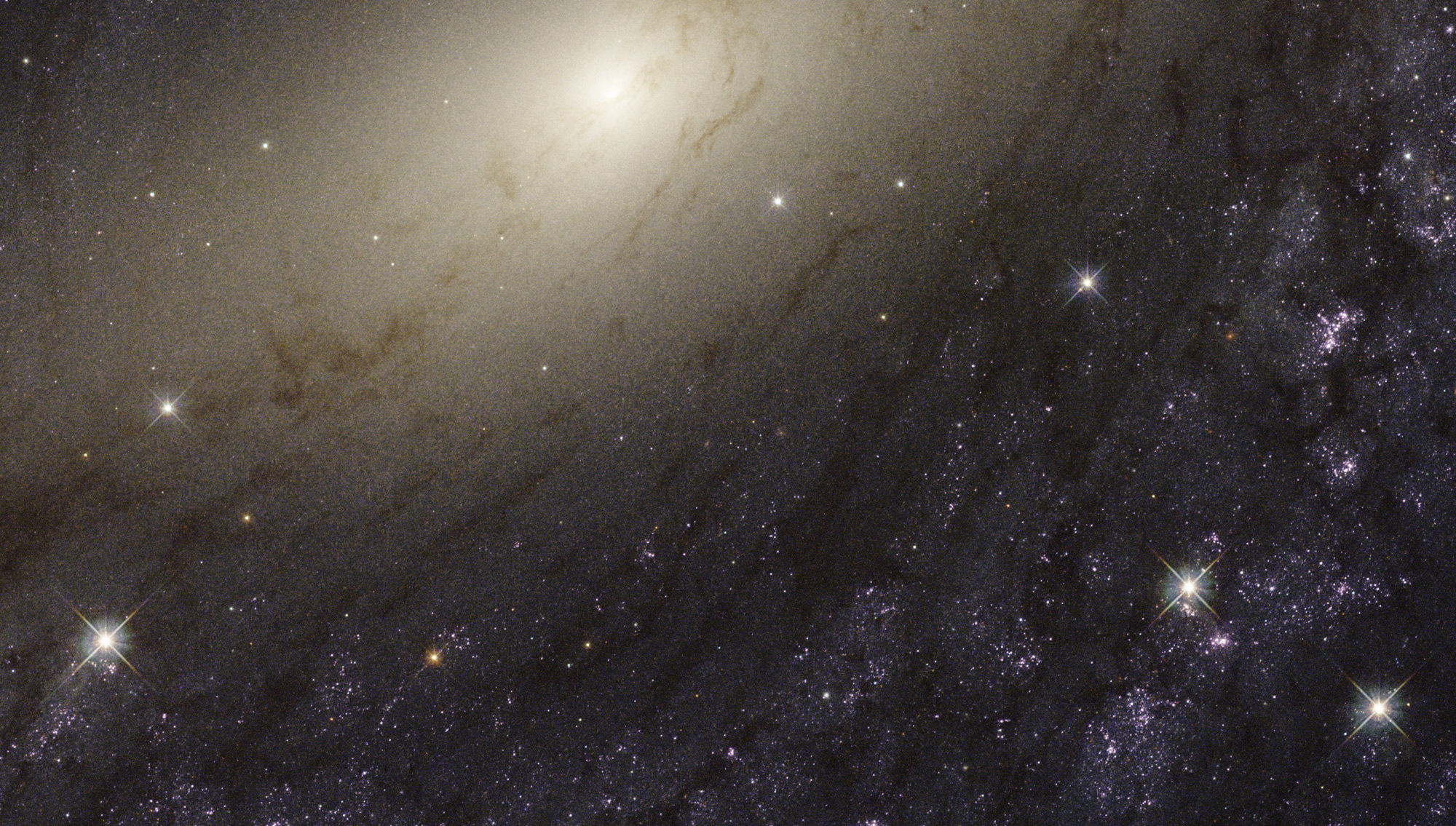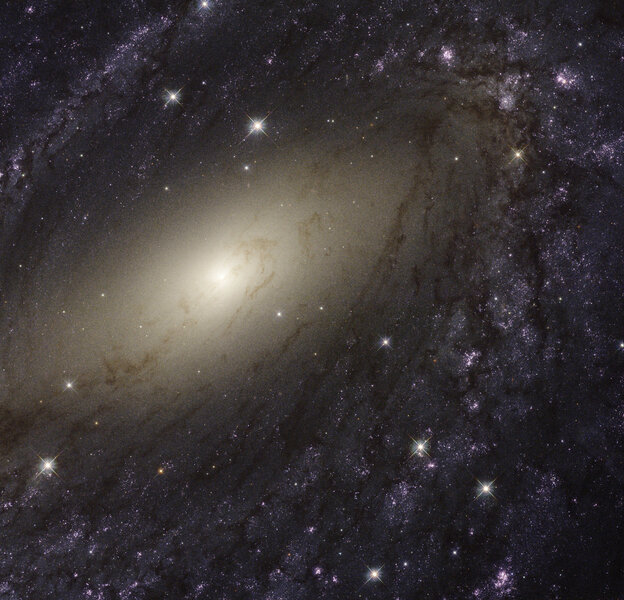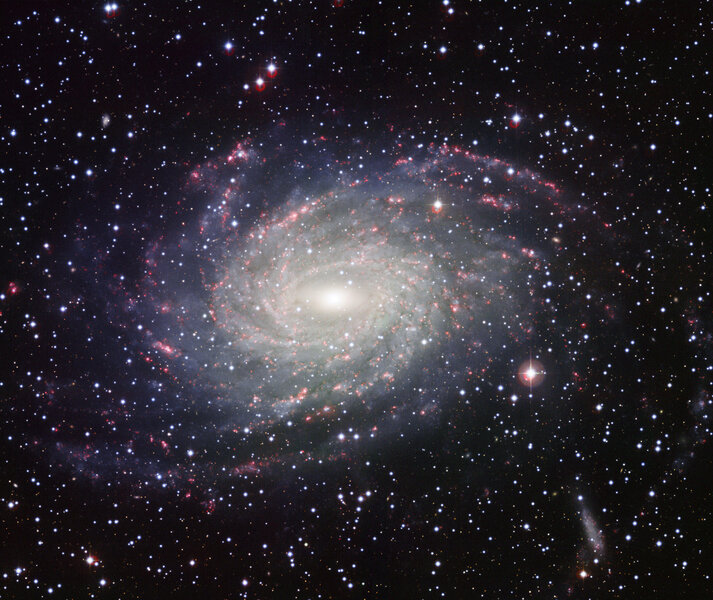Create a free profile to get unlimited access to exclusive videos, sweepstakes, and more!
The Milky Way’s sibling spiral star system

What does our galaxy look like from the outside?
Sadly, we are stuck inside it, making it difficult to figure out its overall shape and structure. It's like being in a vast smoke-filled room and trying to know the shape of the house.
We do have ways of figuring this out, and one of them is to look at other galaxies outside our own and compare. Happily, lots of such galaxies exist, and many are pretty similar to us.
One of them is NGC 6744, a wide-flung spiral galaxy not too far away. It's close enough to study in some detail, which means that Hubble Space Telescope can help. And hey, who doesn't need a spectacular Hubble shot of a sparkling spiral galaxy right about now?
I could use one every day, and I'm all about sharing the love. So here, for your eyeball pleasure, is Hubble's view of NGC 6744, which is just bursting with astronomical gorgeousness:
See? Told ya.
I love the way this image is cropped; it feels almost as if you're flying over it, banking left, and ready to dive through the galactic disk. But what are we seeing?
NGC 6744 is a spiral galaxy, a flat disk of stars, gas, dust, and dark matter. Like most spirals, it has a well-defined hub — the yellowish Tic-Tac shape dominating the image. Because it's elongated, we call it a "bar." This is also common in spiral galaxies, due to the peculiar gravity of the disk. Instead of a single object dominating the mass of the system (as the Sun does in the solar system), the mass of a galaxy is spread out, and this changes the way features form and grow. The stars near the center tend to take on elliptical orbits, defining the bar shape.
The color is due to age. When nebulae — gas clouds — make stars, there are lots of different kinds born. Some are low mass and red, some much more massive and blue. Those blue ones don't live long, and explode. If star formation cuts off, after a while all the blue stars are gone, leaving only the redder ones behind. There's no star formation in the centers of galaxies like this, so the nucleus is redder.
The disk, though, is a different story. The spirals are again structures that form due to the gravity being spread out. It's not due to differential rotation — that is, stuff closer in to the center orbiting more quickly than stuff farther out. If that were the case, spiral arms would wind up like string on a spool after only a few rotations. Instead they're more like traffic jams, where stuff piles up in the arms on one side, and slowly leaves them on the other. And just like fender benders are more likely in traffic jams, gas clouds can collide or interact in spiral arms as well. This causes them to collapse and form stars.
Some galaxies are more fecund than others, forming stars at higher rates. NGC 6744 is one such galaxy. What you see as purple and pink in the Hubble image are sites of star birth (purple in the image is from ultraviolet light, common when massive stars are born, and pink is from hydrogen gas excited by the stars, making it glow literally like a neon sign). As you can see, there's a lot of pink and purple.
It's even more obvious in this wider field view of the galaxy taken using the Wide Field Imager (WFI) on the European Southern Observatory's MPG 2.2 meter telescope in Chile:
Whoa. For scale, this image on the sky is just a little smaller than the full Moon!
Some galaxies have very tight spirals, and others very open. NGC 6744 is intermediate between the two, leaning more towards open. The arms are very long, and you can trace the outermost ones all the way to the edge of the image. And they are just packed with nebulae getting busy. In that image, the pinkish-red spots are from hydrogen gas, and it's clear the galaxy is making lots of baby stars.
In both images you can see quite a few bright stars scattered around. These are actually in our own galaxy; we have to look out of the Milky Way past our own stars to see the galaxies beyond (I like to say it's like looking out a dirty window at scenery outside).
When I first saw the Hubble image, due to the size and amount of detail I could see, I guessed the galaxy was about 20 million light years away (closer to us and more detail like individual stars can be seen; farther out and they merge together more). I was close, but the exact distance to NGC 6744 isn't well known. I've seen measurements from 20 to as much as 35 million light years, depending on the method used. If it's at the close end it's roughly 100,000 light years across, the same size as the Milky Way. Farther away and it must be bigger, up to twice as big.
In the WFI image, you can see a small, elongated smudge to the lower right. That's apparently a satellite galaxy, a smaller irregular galaxy orbiting the spiral. Many if not most big galaxies have them, including our own; we have dozens.
In fact, NGC 6744 looks a whole lot like the Milky Way. We too are a spiral with a large bar in the center, open arms, and lots of star formation… though NGC 6744 has us beat. On average, about one Sun's mass worth of stars are born in the Milky Way every year*, but NGC 6744 has at least twice that many popping out, if not more.
It also hosts a supermassive black hole in its heart, as most big galaxies do. Unlike ours, the one in the core of NGC 6744 is actively eating material like gas clouds, and emitting radiation across the electromagnetic spectrum (though not very powerfully as these things go). This makes it an active galaxy, while the Milky Way is categorized as quiescent.
Still, it's so similar to us that it makes for an interesting case study for what our galaxy looks like from the outside.
There's a lot we can learn about the Milky Way from studying other galaxies. But if all you take away is that our galaxy must be an absolutely stunning celestial object from someone else's point of view, that's OK too.
* It's not really like one Sun is born every year; it's more like taking an average over a long time and then scaling that number to something we humans can grasp. So, say, you look over a million years, and millions of stars are born, with a handful more massive than the Sun, and the majority of far lower mass. When you divide by the time you get an average in the Milky Way of about one Sun's mass per year. We don't actually look that long, of course, but those numbers can be found by the way gas clouds emit light as stars in them light them up.
















